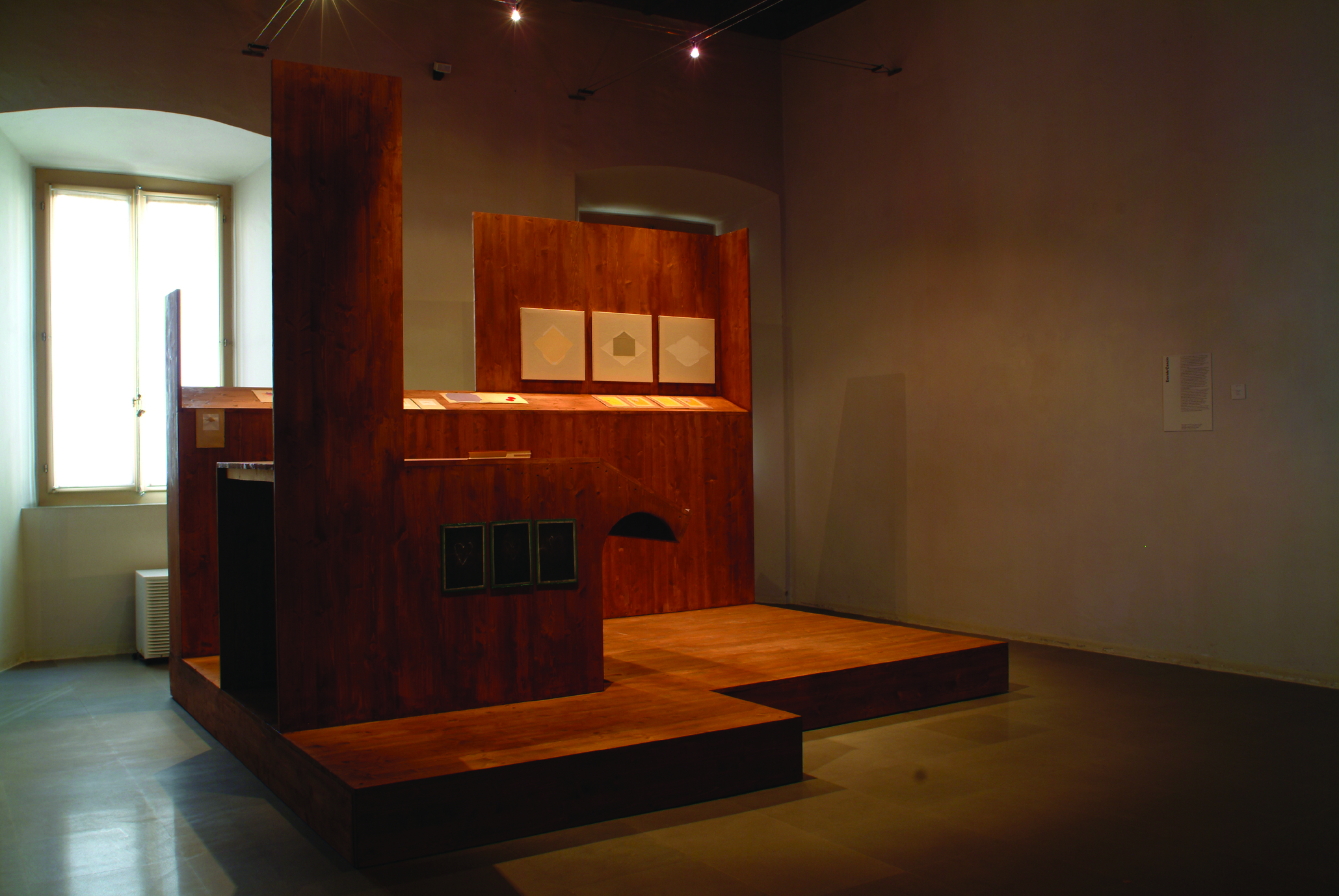San Girolamo nello studio
 San Girolamo nello studio
San Girolamo nello studio
Legno,collage, tecnica mista
installazione
348x300x264 cm
Museo Cantonale díArte, Lugano
2003









For Davide Cascio, art is travel, real and imaginary, along ancient routes which reveal roads not yet beaten or now forgotten, the crossing of frontiers of time and space searching for that underground echo which ranges through history and which, alone, can make us catch a glimpse of the secret. A journey which, even though it can rely upon maps already drawn up by others, must constantly and newly return to the beginning, to retrace their steps.
In his research, he doesn’t use wide brush strokes, nor vast surfaces, preferring the simplicity and detachment of drawing, the secret space of a book, the temporariness of the notebook. Therefore, the image in the light drawing strokes appears as a slowly self-defining reflection, or is constructed with sudden color combinations, surprising in the collages. Saint Jerome in his study, a work expressly conceived for this occasion, is formed by a wooden structure, which accurately reconstructs the study of Saint Jerome in actual size, as it appears in a famous painting by Antonello da Messina. In the space circumscribed by this structure, the artist displays some of his recent works, to symbolically indicate the ideal space from which his research originates.
Davide Cascio’s installation therefore defines, in this dialectic between internal and external, the only possible space for art. The silent space of Saint Jerome’s study, withdrawn into itself which, as the artist observes, is not “substantially different from the empty room of the Song of Solomon, from the room of Mary, center of an infinite number of Annunciations, from the space on the other side of the grating that divided the public from Joseph Beuys and the savage coyote. Nor does it differ from that which we can observe through the opening in Duchamp’s “Etant donnés” – Duchamp’s last work before his death – should we go to Philadelphia”. It is only in this absorbed and self-reflective dimension that art can aspire to become revelation, epiphany of the mystery of life that the artist constantly interrogates through his work, like Faust retlessly seated at his writing desk.
Elio Schenini
Cfr.: Che c’è di nuovo? La scena artistica emergente in Ticino, Museo Cantonale d’Arte, Lugano, 2003.
 San girolamo nello studio
San girolamo nello studio Antonello da Messina
1474-1475
45,7 × 36,2 cm
National Gallery, London